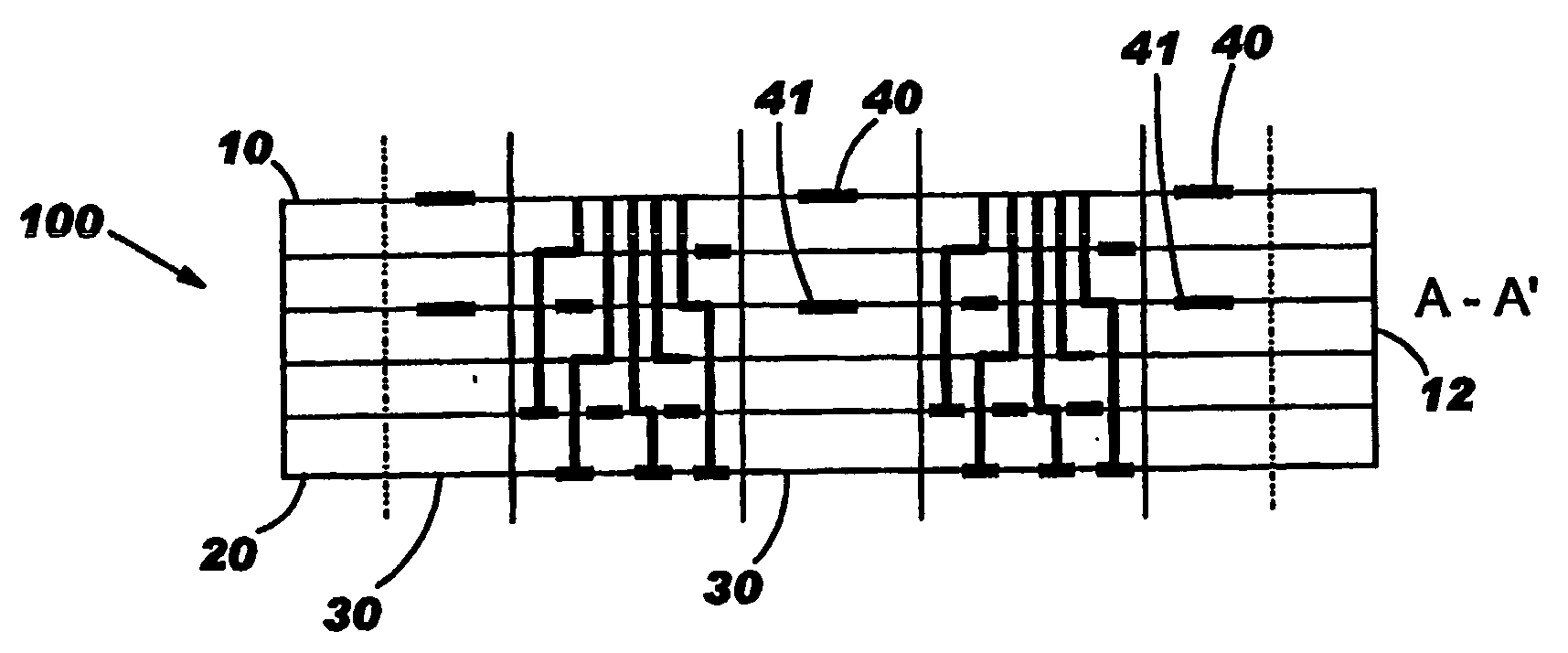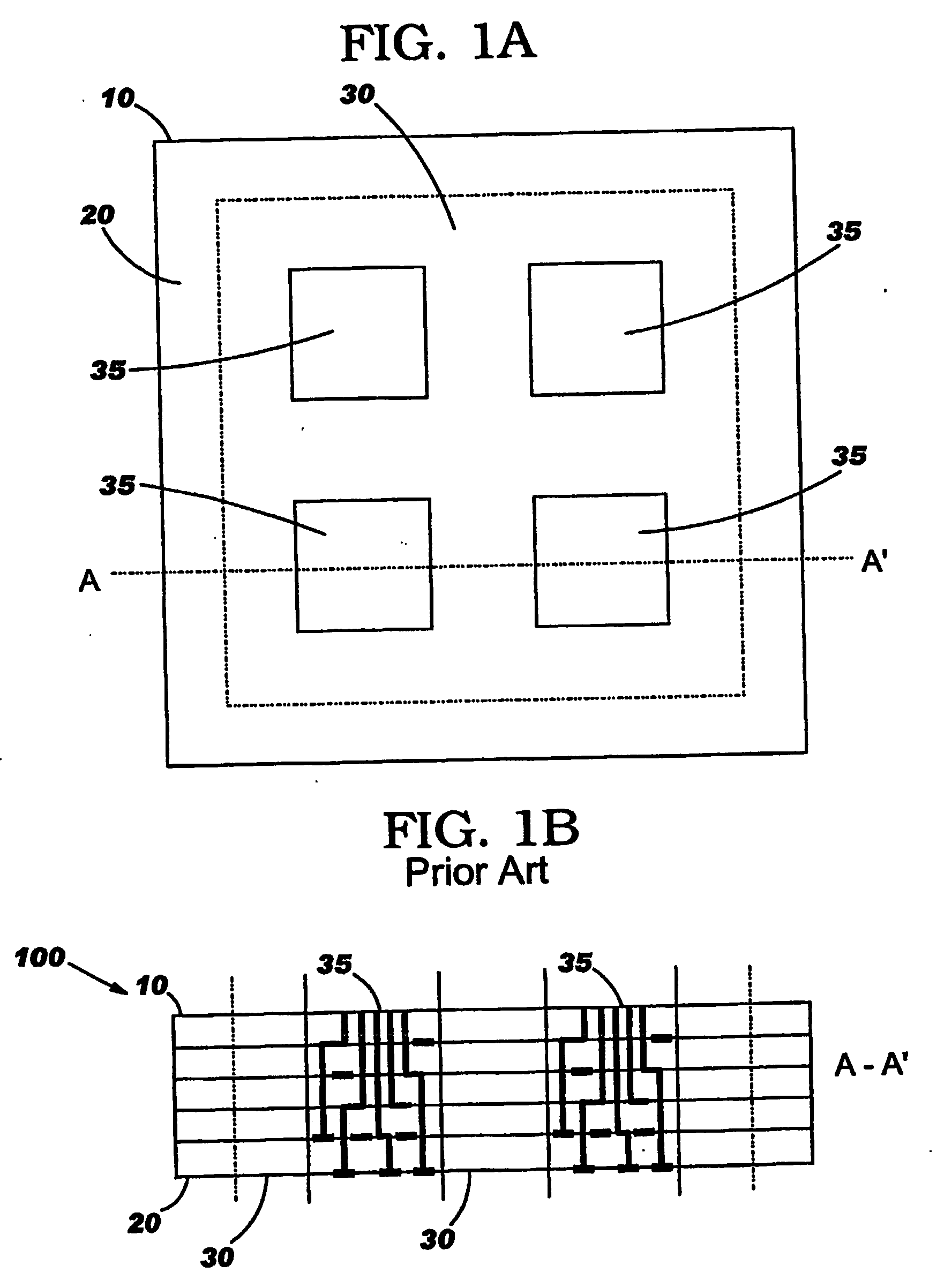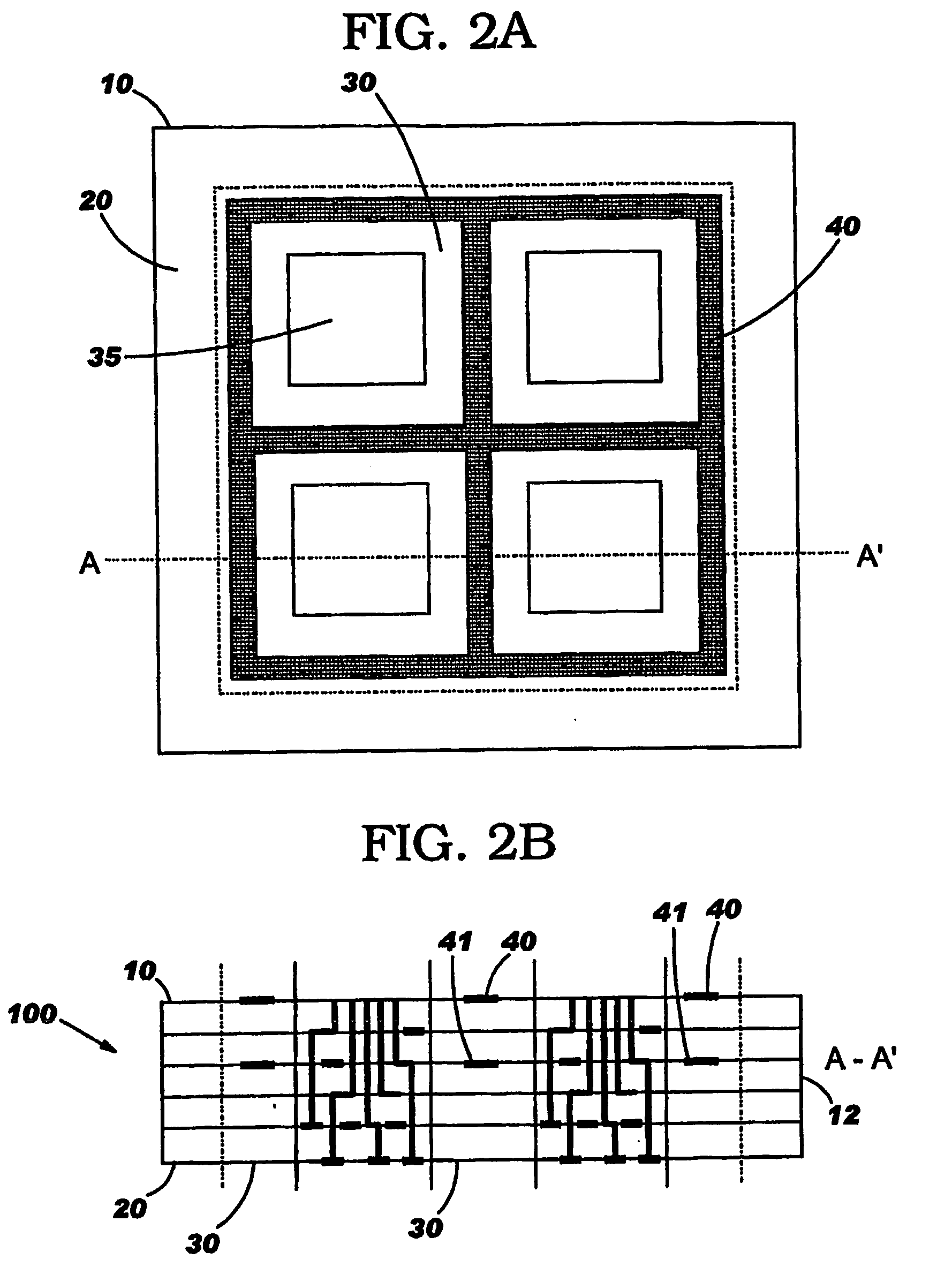Hot pressing ceramic distortion control
a technology of hot pressing and ceramics, applied in the direction of ceramic layered products, transportation and packaging, chemistry apparatus and processes, etc., can solve the problems of large volume shrinkage of mlc substrates, volume shrinkage experiences significant non-uniform viscosity deformation throughout the densifying body, and sample viscosity deformation
- Summary
- Abstract
- Description
- Claims
- Application Information
AI Technical Summary
Benefits of technology
Problems solved by technology
Method used
Image
Examples
Embodiment Construction
[0057] During MLC sintering, the green ceramic laminate undergoes a large volume change, typically from about 40% to about 60% shrinkage, to produce the final MLC substrate. In the case of a free sintering process, the MLC substrate shrinks in all three dimensions, typically about 10% to about 20% linearly in each dimension. If the sintering is done under load, then one dimension may experience most of the shrinkage, particularly in the direction of the applied load. This is directly dependent on the method used to apply the sintering pressure to the green ceramic laminate. In both free sintering and sintering under load, the MLC substrate shrinkage occurs during the ceramic densification stage. During this stage the viscosity of the MLC substrate is sufficiently low and allows the internal sintering forces, driven predominantly by surface tension, to shrink the MLC substrate to its final dimensions. The present invention is directed to control distortion during sintering under load...
PUM
| Property | Measurement | Unit |
|---|---|---|
| Time | aaaaa | aaaaa |
| Thickness | aaaaa | aaaaa |
| Thickness | aaaaa | aaaaa |
Abstract
Description
Claims
Application Information
 Login to View More
Login to View More - R&D
- Intellectual Property
- Life Sciences
- Materials
- Tech Scout
- Unparalleled Data Quality
- Higher Quality Content
- 60% Fewer Hallucinations
Browse by: Latest US Patents, China's latest patents, Technical Efficacy Thesaurus, Application Domain, Technology Topic, Popular Technical Reports.
© 2025 PatSnap. All rights reserved.Legal|Privacy policy|Modern Slavery Act Transparency Statement|Sitemap|About US| Contact US: help@patsnap.com



